
Life does not resemble life [Aleppo]: image by baraa al halabi @baraaalhalabi, 24 October 2015
the Syrian tragedy and the fall
of Europe and the west

A Syrian boy is comforted amid the rubble on Thursday after an airstrike in a rebel-held neighborhood in Aleppo, Syria: photo by Thaer Mohammed/Agence France-Presse, 6 January 2016
What happens next in Aleppo will shape Europe’s future: The aftershocks of the Aleppo bombardment will be felt far and wide: If there were any doubts about Vladimir Putin’s objectives in Syria, the recent Russian military escalation around this city must surely have set them aside: Natalie Nougayrède, The Guardian, 6 February 2016
If Aleppo falls, Syria’s vicious war will take a whole new turn, one with
far-reaching consequences not just for the region but for Europe too.
The latest government assault on the besieged northern Syrian city,
which has caused tens of thousands more people to flee in recent days,
is also a defining moment for relations between the west and Russia,
whose airforce is playing a key role. The defeat of anti-Assad rebels
who have partially controlled the city since 2012 would leave nothing on
the ground in Syria but Assad’s regime and Islamic State. And all hope
of a negotiated settlement involving the Syrian opposition will vanish.
This has been a longstanding Russian objective -- it was at the heart of
Moscow’s decision to intervene militarily four months ago.
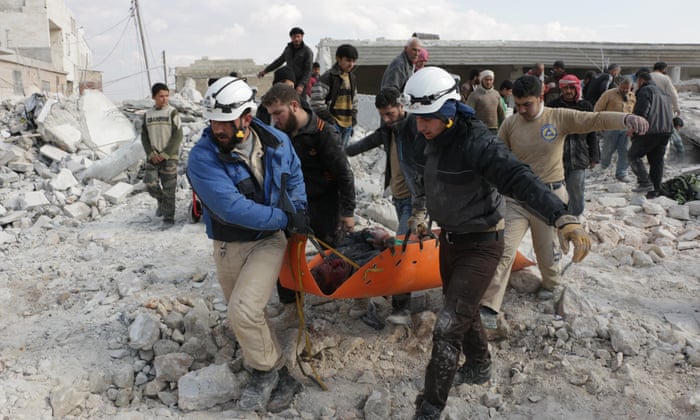
It is hardly a coincidence that the bombardment of Aleppo, a symbol
of the 2011 anti-Assad revolution, started just as peace talks were
being attempted in Geneva. Predictably, the talks soon faltered. Russian
military escalation in support of the Syrian army was meant to sabotage
any possibility that a genuine Syrian opposition might have its say on
the future of the country. It was meant to thwart any plans the west and
the UN had officially laid out. And it entirely contradicted Moscow’s
stated commitment to a political process to end the war.
The aftershocks will be felt far and wide. If there is one thing Europeans have learned in 2015, it is that they cannot be shielded from the effects of conflict in the Middle East. And if there is one thing they learned from the Ukraine conflict in 2014, it is that Russia can hardly be considered Europe’s friend. It is a revisionist power capable of military aggression.

Syrians make their way to the Esselame border gate, in the Turkish province of Kilis, as they flee airstrikes in and around Aleppo: photo by Anadolu Agency, 4 February 2016
In fact, as the fate of Aleppo hangs in the balance, these events
have -– as no other perhaps since the beginning of the war -– highlighted
the connections between the Syrian tragedy and the strategic weakening
of Europe and the west in general. This spillover effect is something Moscow has
not only paid close attention to, but also in effect fuelled.
The spread of instability fits perfectly with Russia’s goal of seeking dominance by exploiting the hesitations and contradictions of those it identifies as adversaries.
Aleppo will define much of what happens next. A defeat for Syrian opposition forces would further empower Isis in the myth that it is the sole defender of Sunni Muslims -– as it terrorises the population under its control.
There are many tragic ironies here, not least that western strategy against Isis has officially depended on building up local Syrian opposition ground forces so that they might one day push the jihadi insurgency out of its stronghold in Raqqa. If the very people that were meant to be counted on to do that job as foot soldiers now end up surrounded and crushed in Aleppo, who will the west turn to? Russia has all along claimed it was fighting Isis –- but in Aleppo it is helping to destroy those Syrian groups that have in the past proved to be efficient against Isis.
If there were ever any doubts about Russia’s objectives in Syria, events around Aleppo will surely have cleared them.
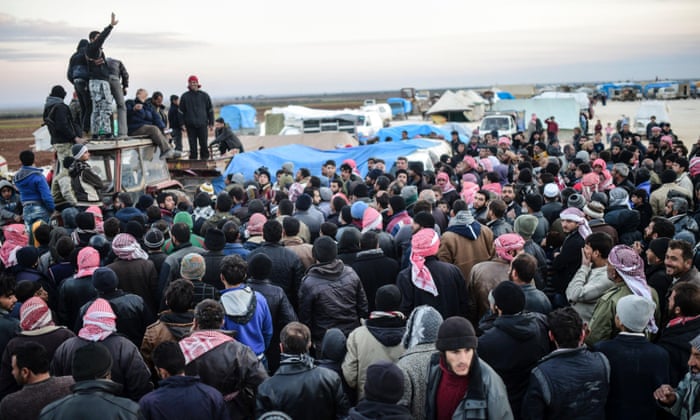
Nearly 40,000 Syrian civilians have fled Aleppo: photo by Bulent Kilic/AFP, 6 February 2016
Vladimir Putin has duplicated in Syria the strategy he applied to Chechnya: full
military onslaught on populated areas so rebels are destroyed or forced
out. There is a long history of links -– going back to the Soviet era -–
between the Syrian power structure and Russian intelligence. Just as
Putin’s regime physically eliminated those in Chechnya who might have
been interlocutors for a negotiated peace settlement, Assad has
conflated all political opposition with “terrorism”. And as there was
never any settlement in Chechnya (only full-on war and destruction until
the Kremlin put its own Chechen leader in place), in Putin’s view there
can be no settlement in Syria with the opposition.
Russia’s strategic objectives go much further, however. Putin wants to reassert Russian power in the Middle East, but it is Europe that he really has in mind. The defining moment came in 2013, when Barack Obama gave up on airstrikes against Assad’s military bases after chemical weapons were used. This encouraged Putin to test western resolve further away, on the European continent. Putin was certainly caught off guard by the Ukrainian Maidan popular uprising, but he swiftly moved to restore dominance through use of force, including the annexation of territory. He calculated -- rightly -– that his hybrid war in Ukraine could not be prevented by the west. Russian policies in Ukraine have as a result shaken the pillars of Europe’s post-cold-war security order -– which Putin would like to see rewritten to Russia’s advantage.

Refugee children arrive in Bab-Al Salam, near Azaz, northern Syria: photo by Bulent Kilic/AFP, 6 February 2016
Likewise, Russian military involvement in Syria has put Nato in a
bind, with one of its key members right on the frontline. Turkey’s
relations with Russia have been on the brink for months. Now Moscow has
openly warned Turkey against sending forces into Syria to defend Aleppo.
How the Turkish leader will choose to react is another western
headache.
All this is happening at a time when European governments are desperate to win Ankara’s cooperation on the refugee problem. If Turkey now turns into a troublemaker for Nato on its Middle Eastern flank, that serves Russian interests. Similarly, if Europe sees a new exodus of refugees, Russia will stand to benefit. The refugee crisis has sowed deep divisions on the continent and it has helped populist rightwing parties flourish -– many of which are Moscow’s political allies against the EU as a project. The refugee crisis has put key EU institutions under strain; it has heightened the danger of Brexit (which Moscow would welcome); and it has severely weakened Angela Merkel, the architect of European sanctions against Russia.
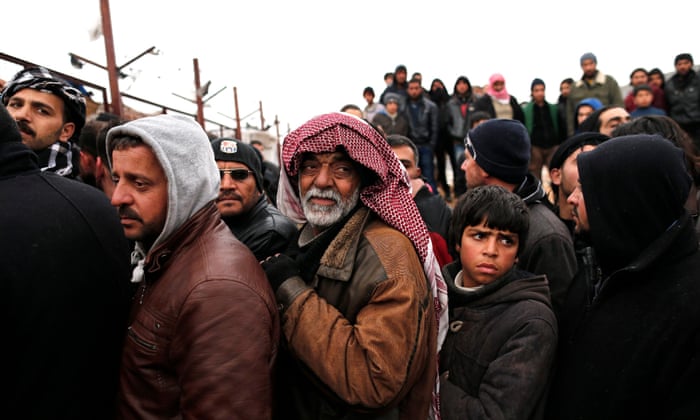
Syrian refugees wait for food near a refugee camp in Bab al-Salama city, northern Syria: photo by Sedat Suna/EPA, 6 February 2016
Of course, it would be an exaggeration to say that Putin had all this worked out from the start. He has been led by events as much as he has wanted to control them. Russia is not responsible for the outbreak of the civil war in Syria, nor does it have its hand in everything that happens in Ukraine. But the way Russia has cynically played its pawns should send more alarm bells ringing in the west and in the UN than is the case now.
Putin likes to cast himself as a man of order, but his policies have brought more chaos, and Europe is set to pay an increasing price. Getting the Russian regime to act otherwise will require more than wishful thinking. Aleppo is an unfolding human tragedy. But it is necessary to connect the dots between the plight of this city, Europe’s future, and how Russia hovers over both.

‘White helmets’ rescue the wounded but their work has got far deadlier in recent weeks: photo by Anadolu Agency 6 February 2016
The aftershocks will be felt far and wide. If there is one thing Europeans have learned in 2015, it is that they cannot be shielded from the effects of conflict in the Middle East. And if there is one thing they learned from the Ukraine conflict in 2014, it is that Russia can hardly be considered Europe’s friend. It is a revisionist power capable of military aggression.

Syrians make their way to the Esselame border gate, in the Turkish province of Kilis, as they flee airstrikes in and around Aleppo: photo by Anadolu Agency, 4 February 2016
The spread of instability fits perfectly with Russia’s goal of seeking dominance by exploiting the hesitations and contradictions of those it identifies as adversaries.
Aleppo will define much of what happens next. A defeat for Syrian opposition forces would further empower Isis in the myth that it is the sole defender of Sunni Muslims -– as it terrorises the population under its control.
There are many tragic ironies here, not least that western strategy against Isis has officially depended on building up local Syrian opposition ground forces so that they might one day push the jihadi insurgency out of its stronghold in Raqqa. If the very people that were meant to be counted on to do that job as foot soldiers now end up surrounded and crushed in Aleppo, who will the west turn to? Russia has all along claimed it was fighting Isis –- but in Aleppo it is helping to destroy those Syrian groups that have in the past proved to be efficient against Isis.
If there were ever any doubts about Russia’s objectives in Syria, events around Aleppo will surely have cleared them.

Nearly 40,000 Syrian civilians have fled Aleppo: photo by Bulent Kilic/AFP, 6 February 2016
Russia’s strategic objectives go much further, however. Putin wants to reassert Russian power in the Middle East, but it is Europe that he really has in mind. The defining moment came in 2013, when Barack Obama gave up on airstrikes against Assad’s military bases after chemical weapons were used. This encouraged Putin to test western resolve further away, on the European continent. Putin was certainly caught off guard by the Ukrainian Maidan popular uprising, but he swiftly moved to restore dominance through use of force, including the annexation of territory. He calculated -- rightly -– that his hybrid war in Ukraine could not be prevented by the west. Russian policies in Ukraine have as a result shaken the pillars of Europe’s post-cold-war security order -– which Putin would like to see rewritten to Russia’s advantage.

Refugee children arrive in Bab-Al Salam, near Azaz, northern Syria: photo by Bulent Kilic/AFP, 6 February 2016
All this is happening at a time when European governments are desperate to win Ankara’s cooperation on the refugee problem. If Turkey now turns into a troublemaker for Nato on its Middle Eastern flank, that serves Russian interests. Similarly, if Europe sees a new exodus of refugees, Russia will stand to benefit. The refugee crisis has sowed deep divisions on the continent and it has helped populist rightwing parties flourish -– many of which are Moscow’s political allies against the EU as a project. The refugee crisis has put key EU institutions under strain; it has heightened the danger of Brexit (which Moscow would welcome); and it has severely weakened Angela Merkel, the architect of European sanctions against Russia.

Syrian refugees wait for food near a refugee camp in Bab al-Salama city, northern Syria: photo by Sedat Suna/EPA, 6 February 2016
Of course, it would be an exaggeration to say that Putin had all this worked out from the start. He has been led by events as much as he has wanted to control them. Russia is not responsible for the outbreak of the civil war in Syria, nor does it have its hand in everything that happens in Ukraine. But the way Russia has cynically played its pawns should send more alarm bells ringing in the west and in the UN than is the case now.
Putin likes to cast himself as a man of order, but his policies have brought more chaos, and Europe is set to pay an increasing price. Getting the Russian regime to act otherwise will require more than wishful thinking. Aleppo is an unfolding human tragedy. But it is necessary to connect the dots between the plight of this city, Europe’s future, and how Russia hovers over both.

@Kilicbil ha fotografato i profughi arrivati al confine con la Turchia nelle ultime 24 ore: image via Il Post Foto @ilPostFoto, 6 February 2016
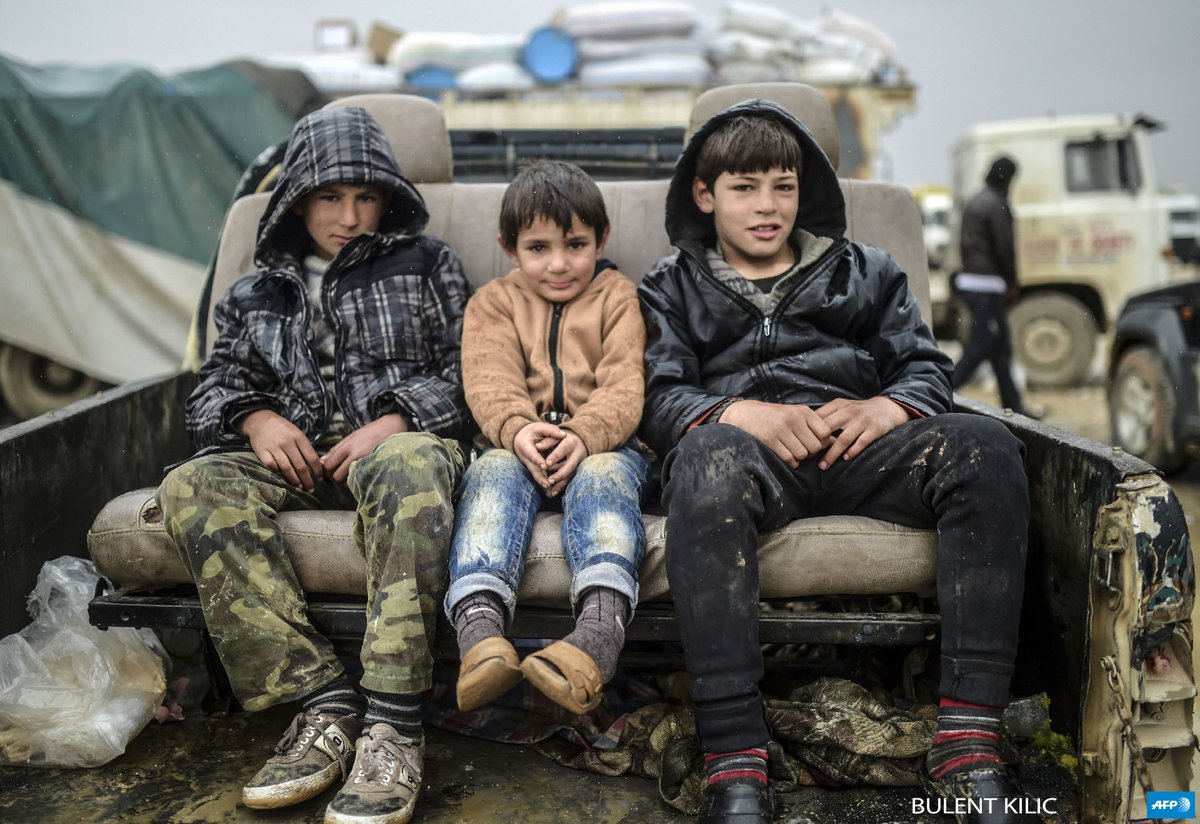
SYRIA - Children sit on a car as Syrians fleeing Aleppo wait in Bab-Al Salam near Turkish border. By @Kilicbil #AFP: image via Frédérique Geffard @fgeffardAFP, 6 February 2016
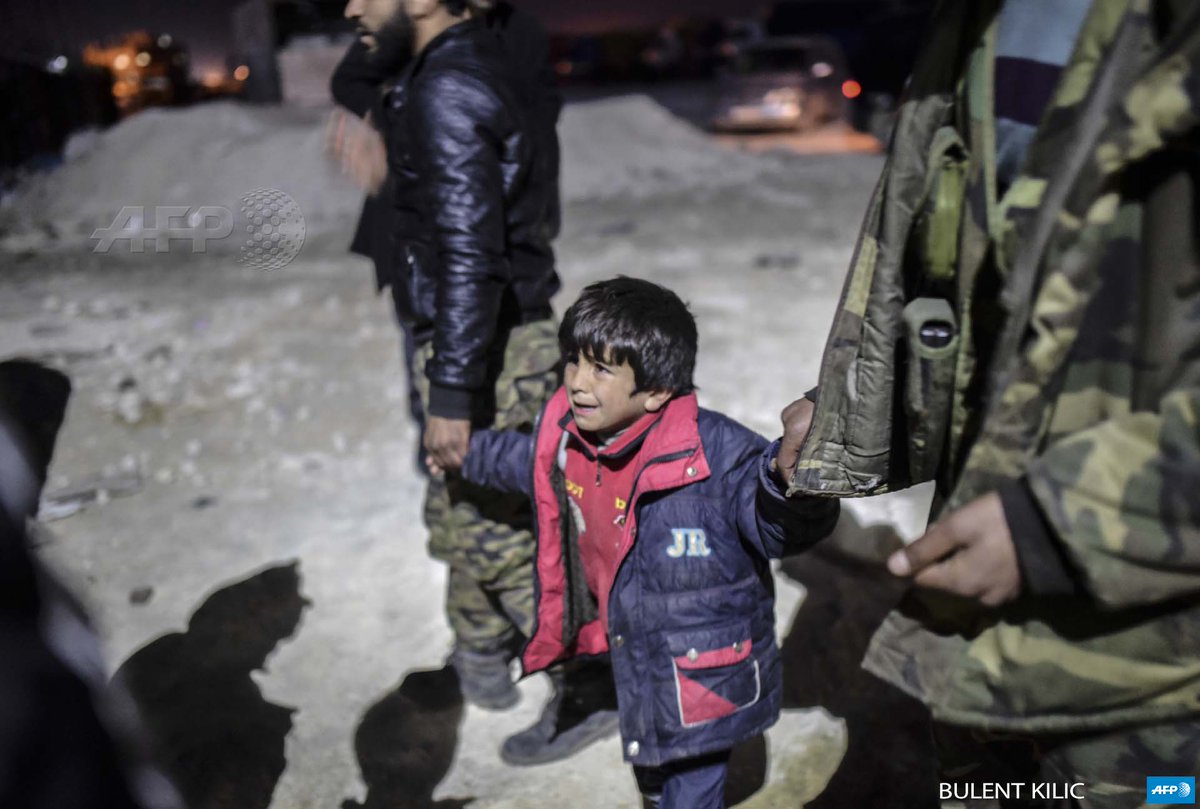
SYRIA - A boy lost his parents as Syrians fleeing Aleppo wait in Bab-Al Salama near Turkish border.. By @Kilicbil #AFP: image via Frédérique Geffard @fgeffardAFP, 6 February 2016
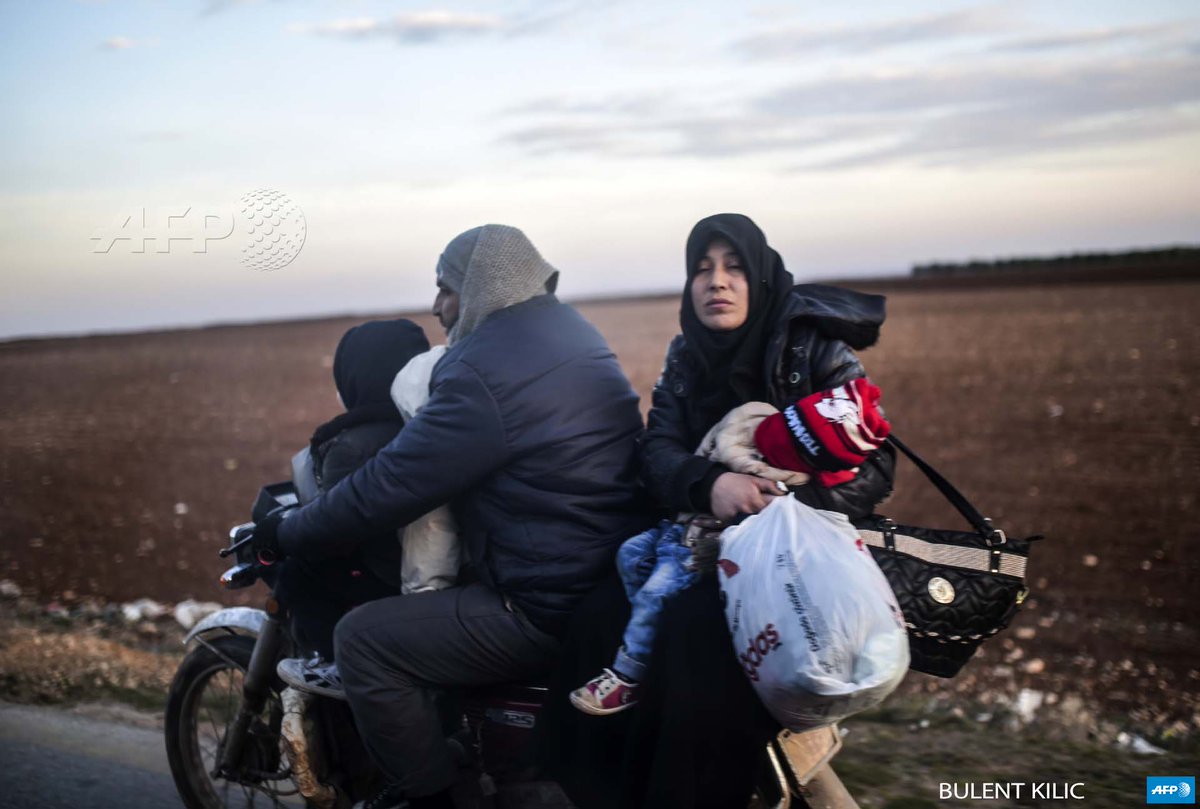
SYRIA - A family rides a motorbike as Syrians fleeing Aleppo wait in Bab-Al Salama near Turkish border.. By @Kilicbil #AFP: image via Frédérique Geffard @fgeffardAFP, 6 February 2016
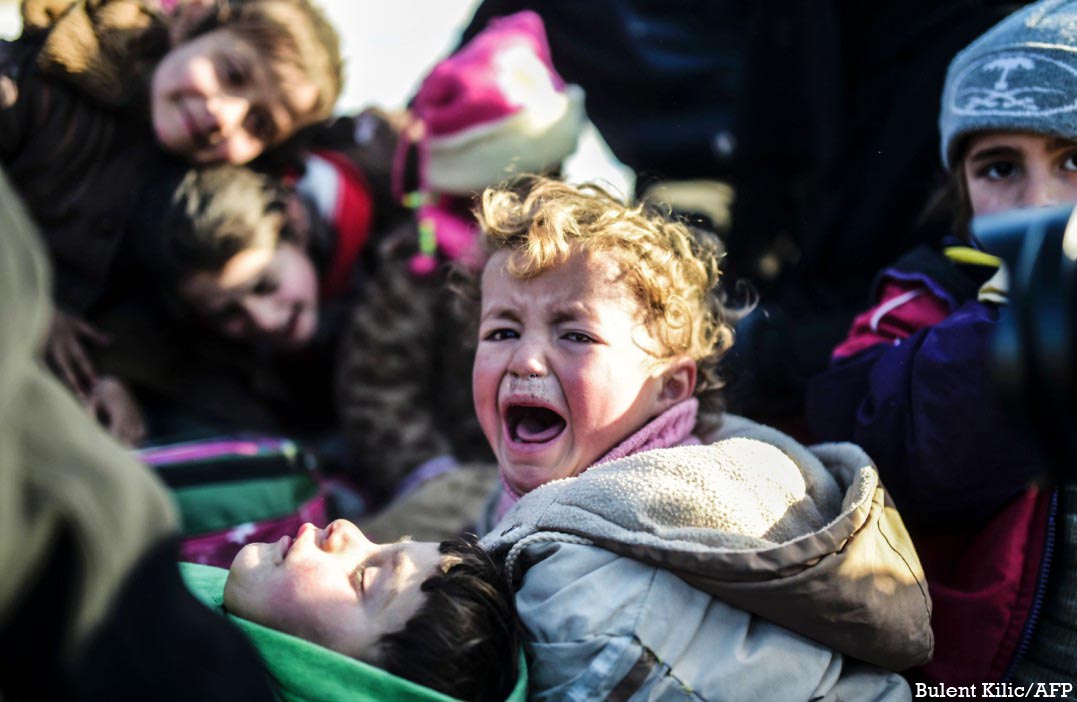
A child cries as #Syrians fleeing #Aleppo wait near #Azaz on the #Syria #Turkey border photo @Kilicbil #AFPhoto: image via SundayTimesPictures @STPictures, 6 February 2016

Displaced people moved toward the Turkish border Friday. The United Nations said 20,000 were stuck on the Syrian side: photo by Depo Photos via Associated Press, 6 February 2016

Syrian refugees near a crossing gate on the Turkish border on Friday. Tens of thousands of civilians were fleeing the Aleppo area: photo by Bulent Kilic/Agence France-Presse, 6 February 2016

SYRIA - Refugees push each other as they wait for tents in Bab-Al Salam near the Turkish border. By @Kilic #AFP: image via AFP Photo Department @AFPphoto, 6 February 2016
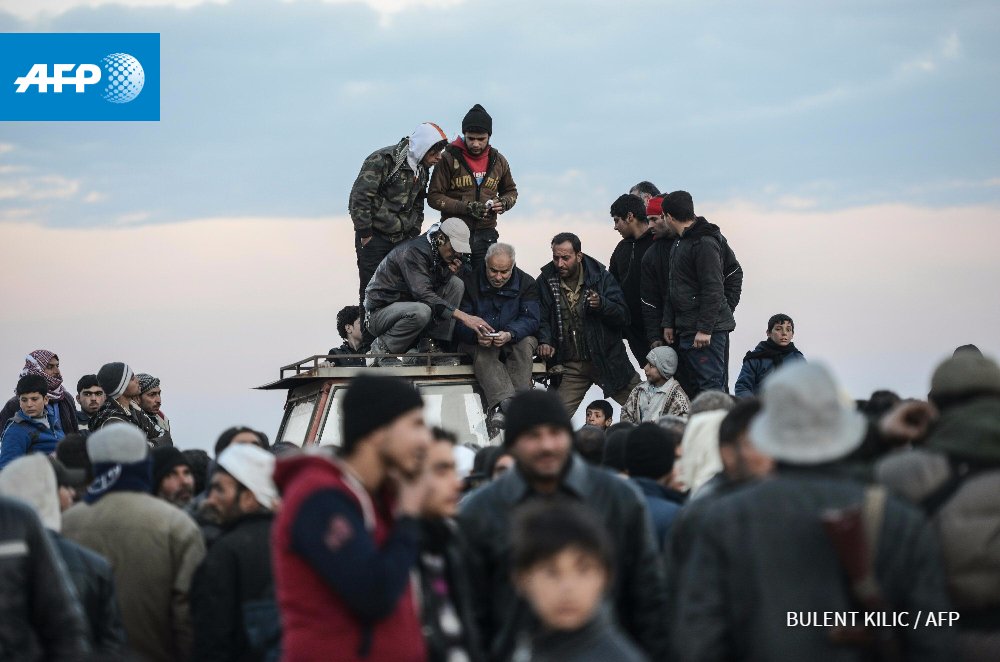
Syrians mass on Turkish border as regime advances: image via AFP news agency @AFP, 5 February 2016
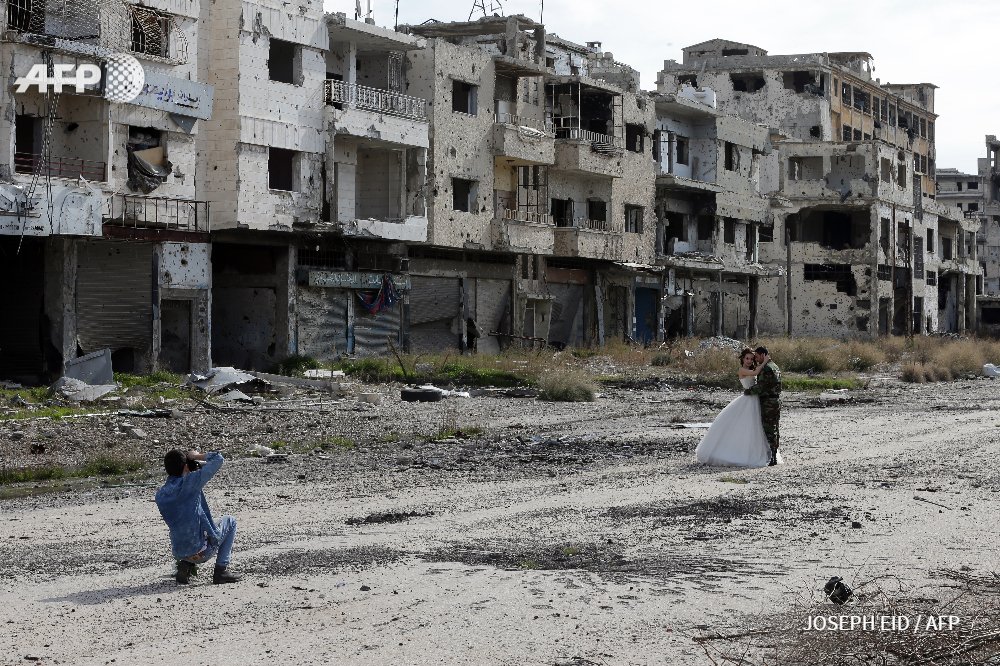
A young Syrian couple have wedding pictures taken in front of a damaged building in the war ravaged city of Homs: image via AFP news agency @AFP, 5 February 2016
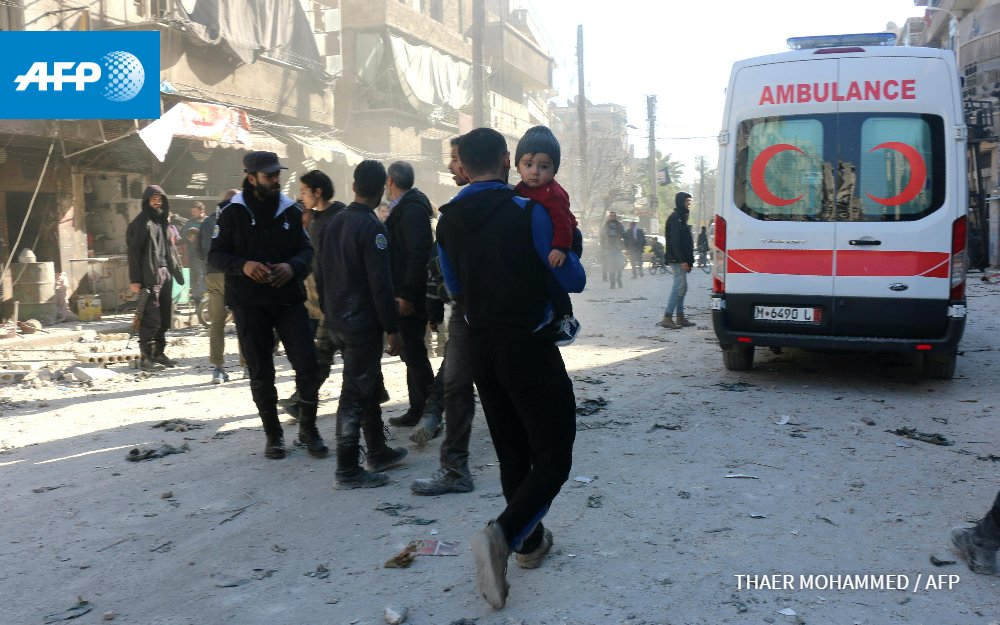
Tens of thousands flee as #Syria regime advances near Aleppo: image via AFP news agency @AFP, 4 February 2016
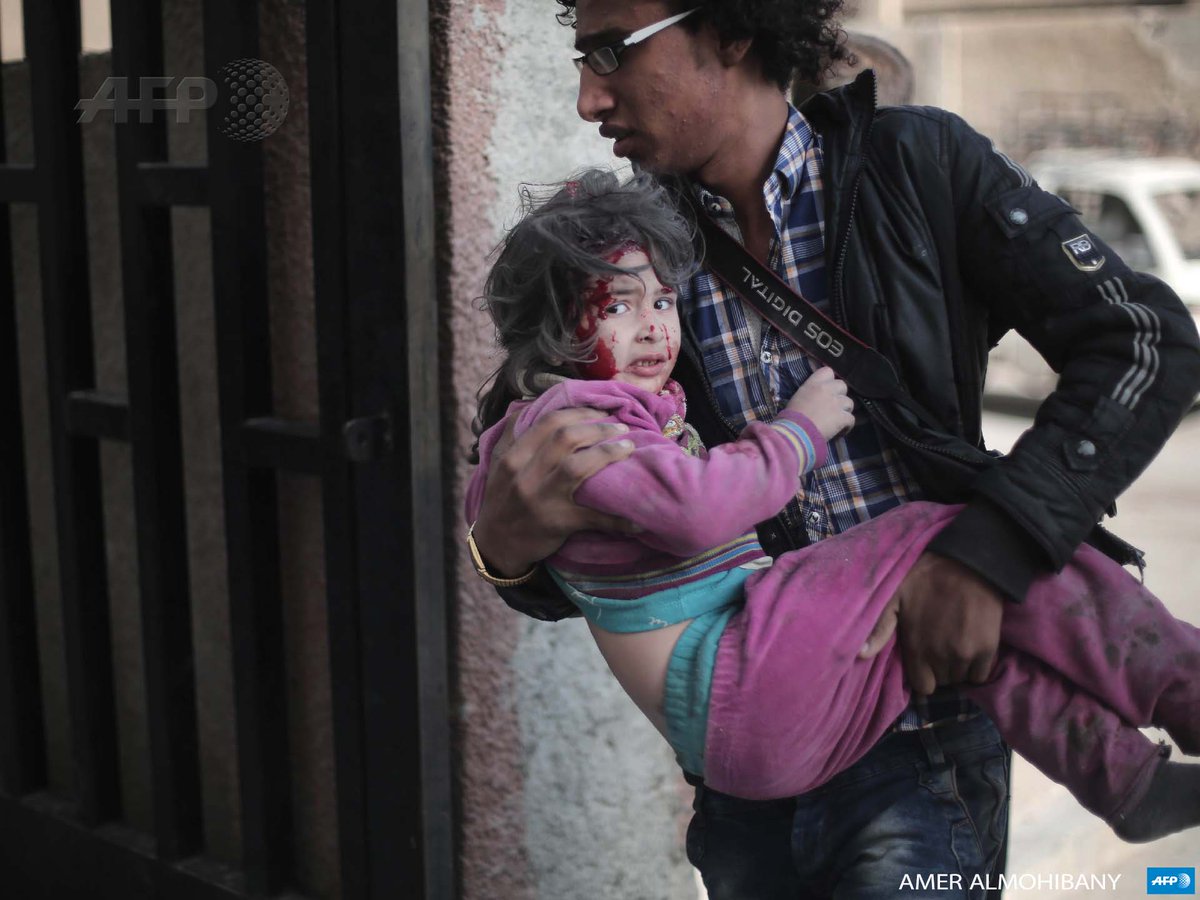
SYRIA - A Syrian photographer carries injured girl following air strikes on al-Nashabiyah. By Amer Almohibany #AFP: image via Frédérique Geffard @fgffardAFP, 15 December 2015

Russian aviation bombed the city of Aleppo: image via baraa al halabi @baraaalhalabi, 28 November 2015

Not a place to despair Aleppo: image via baraa al halabi @baraaalhalabi, 30 November 2015
Civilians photographed in a damaged building in Syria's northern city of Aleppo following a reported air strike by government forces on Monday: photo by Karam Al-Masri/AFP, 7 December 2015
Men play chess in front of a damaged building in the rebel-controlled area of Maaret al-Naaman town in Idlib province, Syria on Monday: photo by Khalil Ashawi/Reuters, 19 October 2015
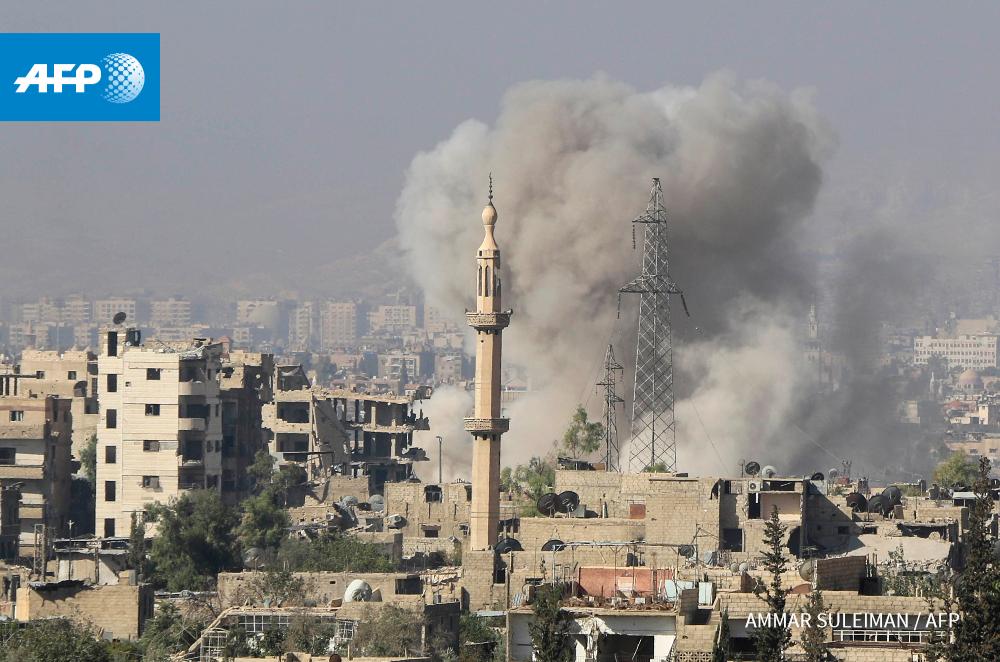
US wants to avoid 'total destruction' of Syria: Kerry: image via Agence France-Presse @AFP, 19 October 2015

Une
photo publiée le 5 octobre 2015 par le gouvernement russe montre un
bombardier Su-24M larguant une bombe sur la Syrie: image via Russian Defence
Ministry/AFP, 19 October 2015

A class at a school in a rebel-controlled area of Damascus, Syria. The start of the new new school year was postponed several times because of airstrikes.: photo by Bassam Khabieh/Reuters, 19 October 2015
"Aleppo is more beautiful than Europe"
Graffiti from Aleppo : "Aleppo is more beautiful than Europe. Do not emigrate": image via baraa al halabi @baraaalhalabi, 18 October 2015
There's little question that Russia is determined to re-establish Assad as Syria’s leader: image via The New York Times @nytimes, 1 October 2015
[untitled]: image via Agence France-Presse @AFP, 1 October 2015
Follow our LIVE coverage as Russian jets launch a second day of air strikes in #Syria: image via Reuters Live @ReutersLive, 1 October 2015
'Curious' Russian strikes in Syria not against Islamic State: France: image via Reuters Top News @Reuters, 30 September 2015
Where are the Russian bombs in Syria falling?: image via Reuters Top News @Reuters, 1 October 2015
White House says Russian involvement in Syria risks making conflict "indefinite": image via Reuters Live @ReutersLive, 1 October 2015
America . Russia And the victim Syria: image via baraa al halabi @baraaalhalabi, 1 October 2015
An
honor guard opens the door as Russian President Vladimir Putin prepares to
enter a hall to attend a meeting with members of the Presidential
Council for Civil Society and Human Rights at the Kremlin in Moscow,
Russia, on Thursday: photo by An Yuri Kochetkov/Reuters, 1 October 2015
death path

[Aleppo]:: image via baraa al halabi @baraaalhalabi, 29 September 2015

A Syrian man holds his robe while walking in the partially destroyed Salaheddin neighborhood of Aleppo, under the control of the Syrian army. Syrian troops backed by artillery and warplanes fought rebels on multiple fronts on September 5 as peace envoy Lakhdar Brahimi described the death toll as "staggering" and destruction "catastrophic.": photo byJoseph Eid/AFP, 3 September 2012
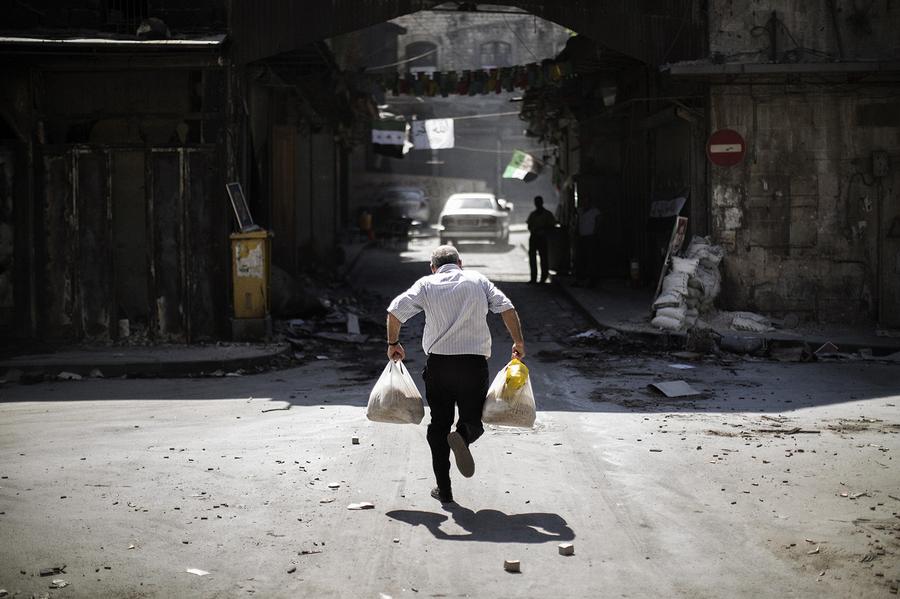
A Syrian man carrying grocery bags tries to dodge sniper fire as he runs through an alley near a checkpoint manned by the Free Syria Army in Aleppo: photo by Marco Longari/AFP, 14 September 2012
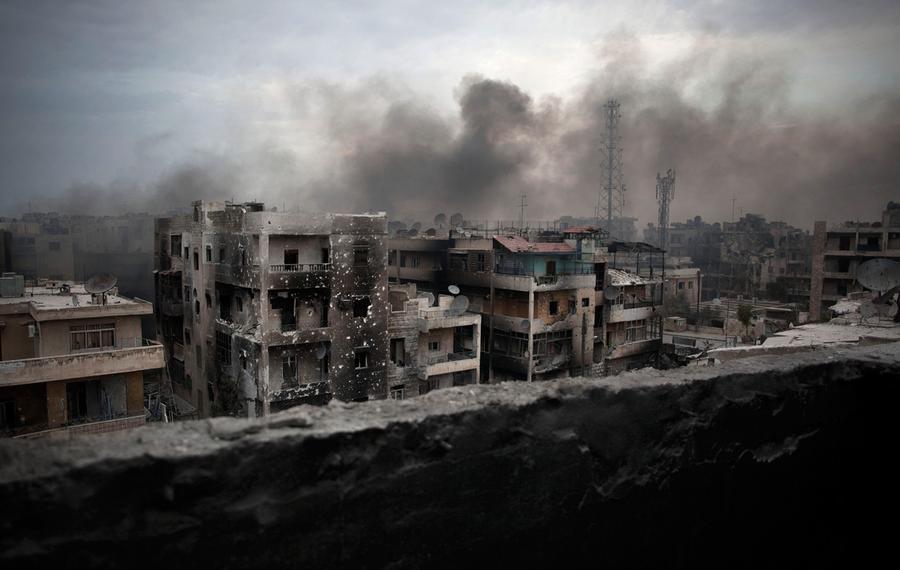
Smoke rises over a battle-scarred Saif Al Dawla district in Aleppo, Syria. The U.N.'s deputy secretary-general says U.N. chief Ban Ki-moon made a strong appeal to Syria's foreign minister to stop using heavy weapons against civilians and reduce the violence that is killing 100 to 200 people every day.: photo by Manu Brabo/AP, 2 October 2012

A Syrian man holds his robe while walking in the partially destroyed Salaheddin neighborhood of Aleppo, under the control of the Syrian army. Syrian troops backed by artillery and warplanes fought rebels on multiple fronts on September 5 as peace envoy Lakhdar Brahimi described the death toll as "staggering" and destruction "catastrophic.": photo byJoseph Eid/AFP, 3 September 2012

A Syrian man carrying grocery bags tries to dodge sniper fire as he runs through an alley near a checkpoint manned by the Free Syria Army in Aleppo: photo by Marco Longari/AFP, 14 September 2012

Smoke rises over a battle-scarred Saif Al Dawla district in Aleppo, Syria. The U.N.'s deputy secretary-general says U.N. chief Ban Ki-moon made a strong appeal to Syria's foreign minister to stop using heavy weapons against civilians and reduce the violence that is killing 100 to 200 people every day.: photo by Manu Brabo/AP, 2 October 2012
death path: image by baraa al halabi @baraaa;halabi, 20 September 2015
Osama, a fourteen-year-old boy who lost his foot in an air strike led by Syrian government forces: image by baraa al halabi @baraaa;halabi, 20 September 2015

Une zone d'Alep sous contrôle rebelle: photo by Baraa Al-Halabi / AFP, 24 November 2014

Après un bombardement contre Alep: photo by Baraa Al-Halabi / AFP, 15 July 2014

Après un bombardement contre Alep: photo by Baraa Al-Halabi / AFP, 15 July 2014
Joseph Ceravolo: O carrion, o carrion
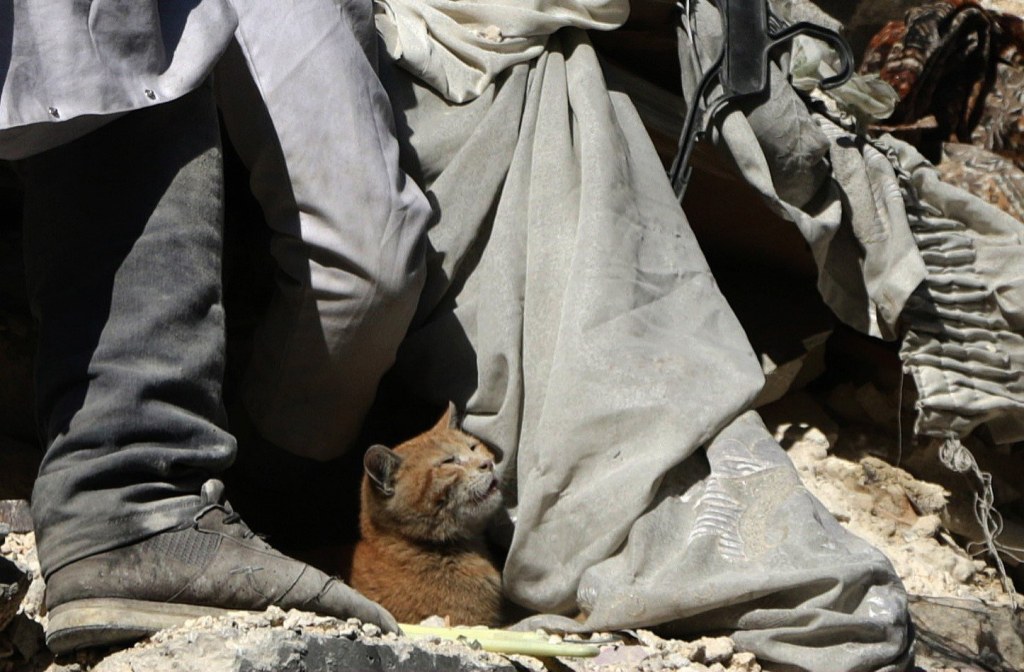
A cat is seen amid debris of a damaged building as the members of the civil defense team search casualties in the al Qallasa neighborhood in Aleppo: photo by Beha el Halebi / Anadolu Agency, 4 February 2016
....,,December 21, 1987
Hidden underground in a frame
...of relics and love.
Come on down, come on deep,
...The pigeon, the dove, the owl
cross over a boulder in the mud.
...O carrion, o carrion
thy gentle swollen tune
...just promise me and promise me
the world in total ruin
The streets were empty as ice
young and old wailing:
pleasure never goes too far.
pleasure never goes too far.
Treasures in heaven or hell.
The cities fade, the meadows reek
...O carrion, o carrion
thy gentle swollen sight
just promise me, and promise me
the world in total light
Joseph Ceravolo (1934-1988): Untitled (December 21, 1987), from Collected Poems, 2012
Air raid by government forces on the city of Aleppo: image via baraa al halabi @baraaalhalabi, 20 September 2015


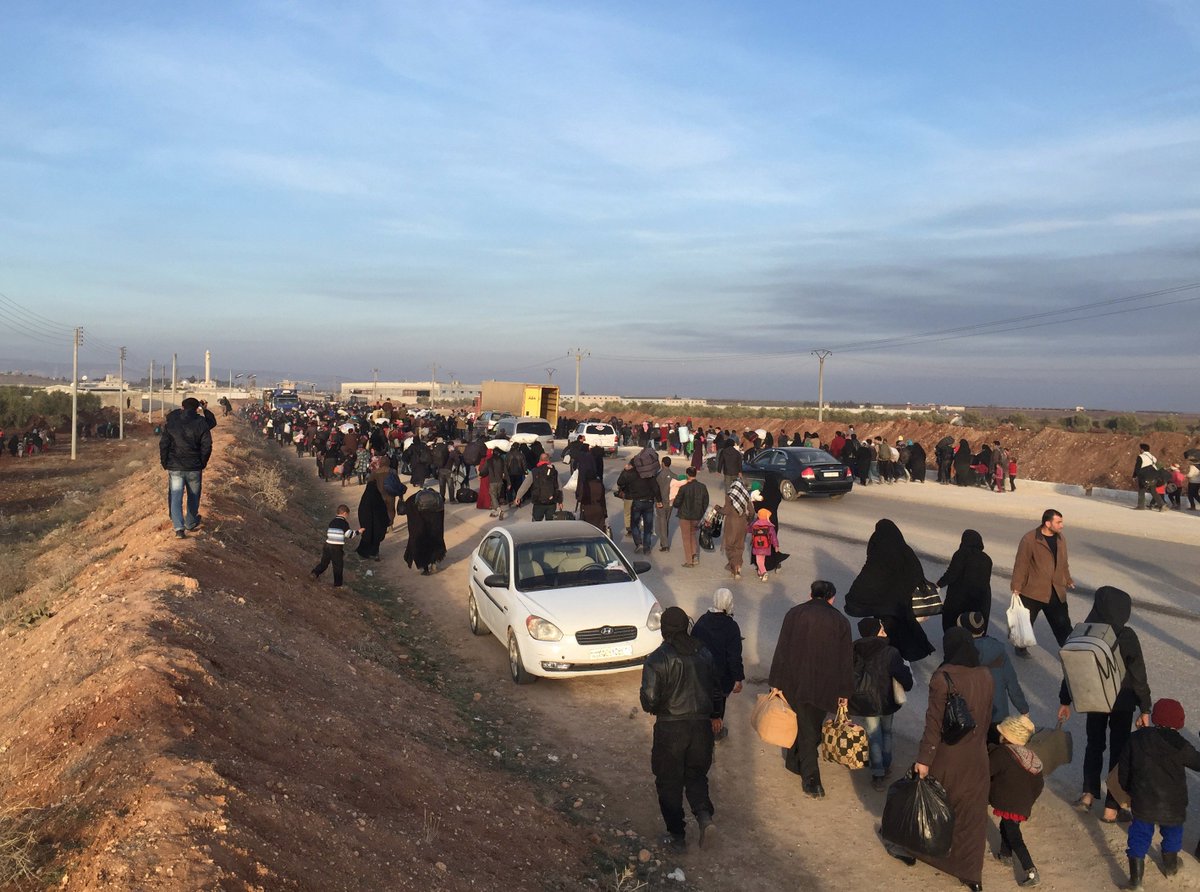
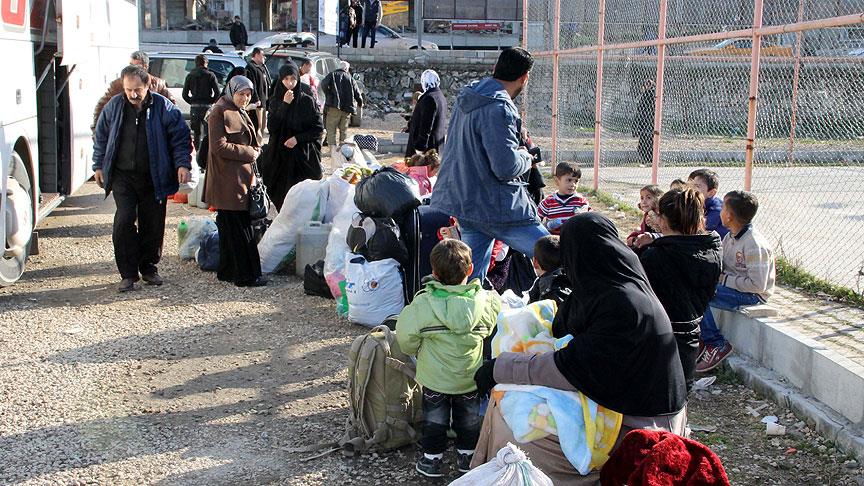
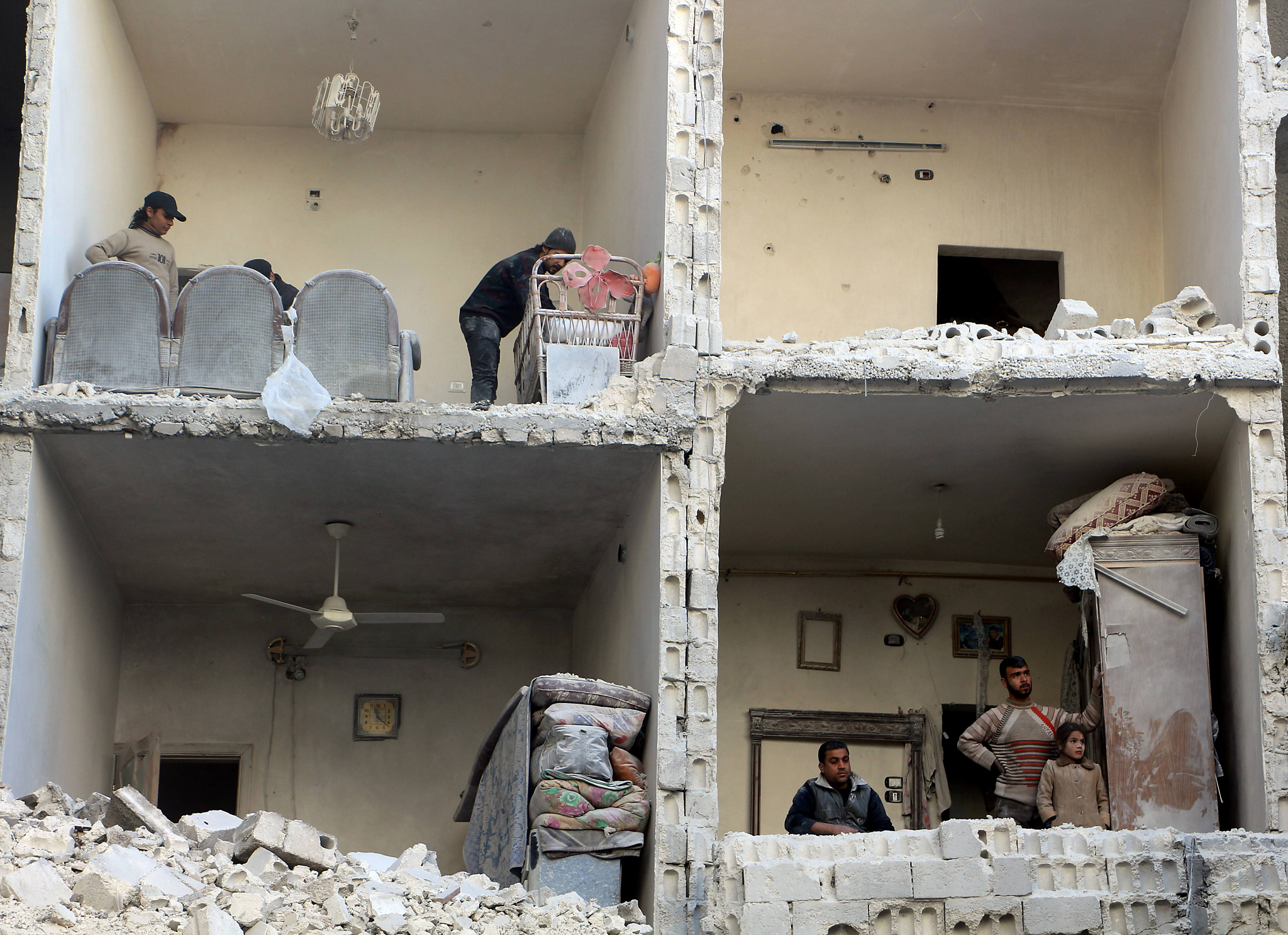
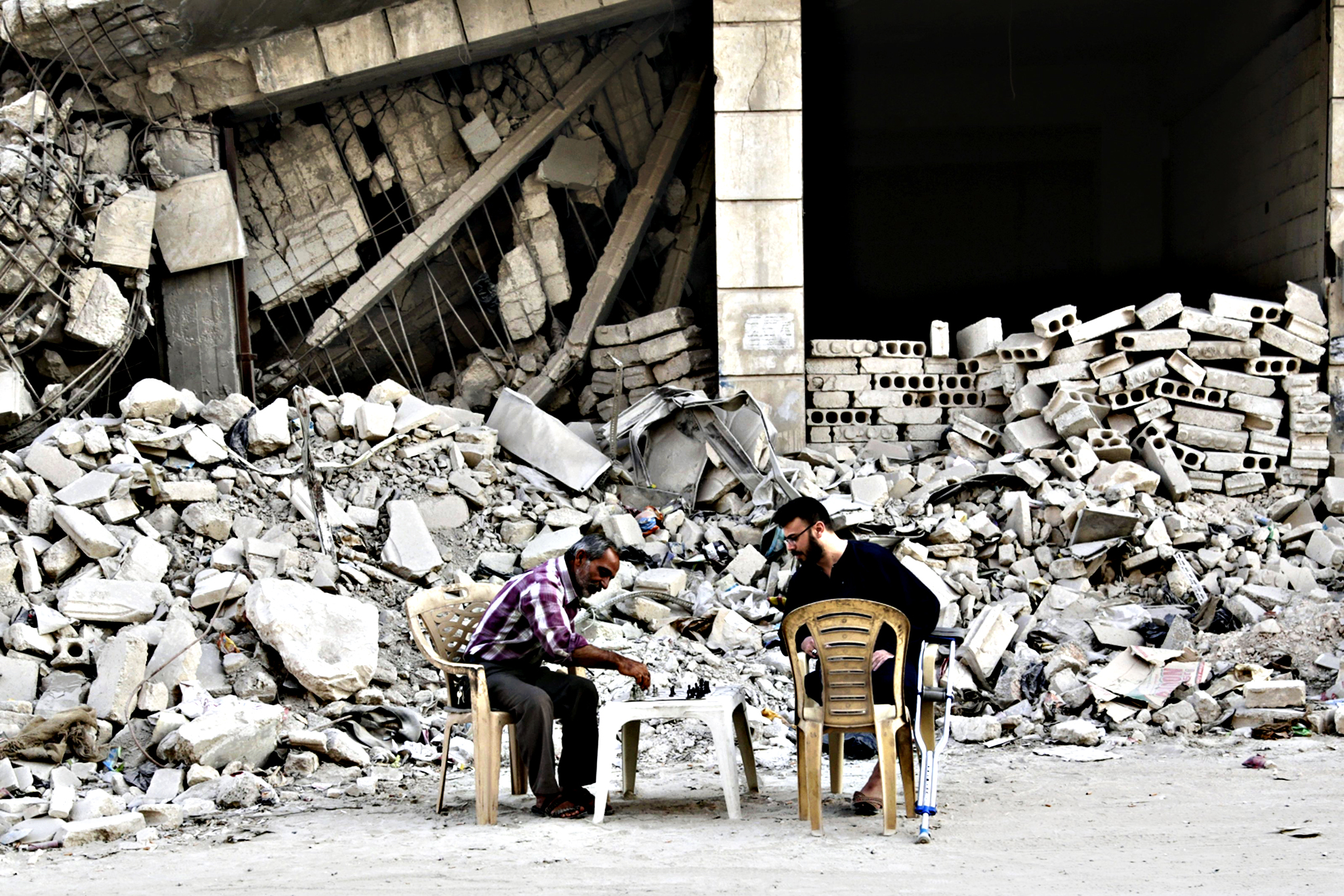




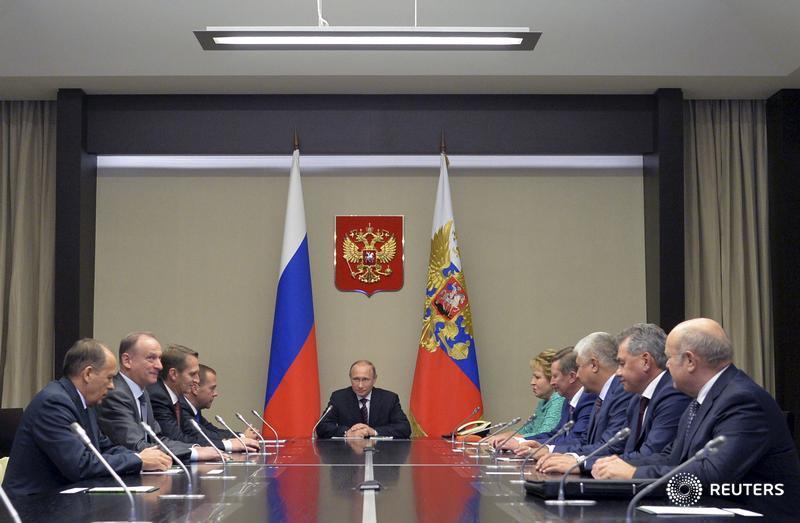
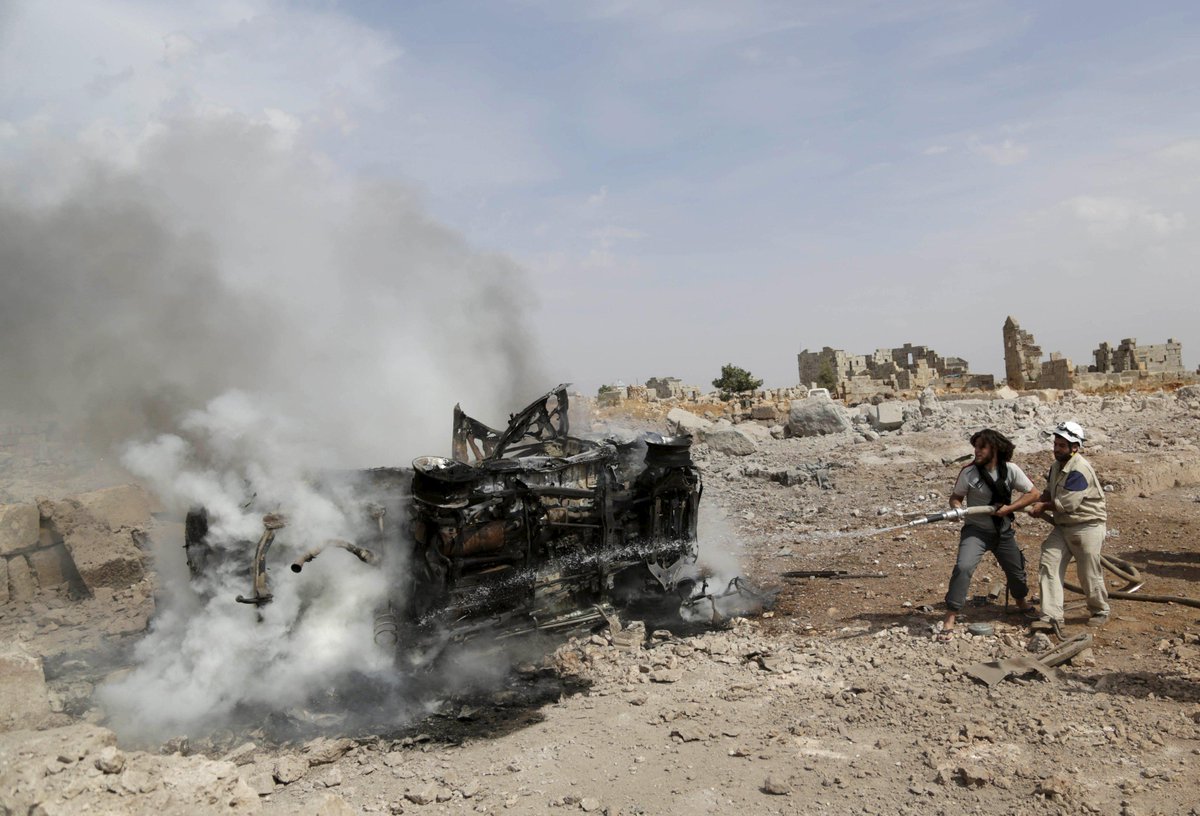


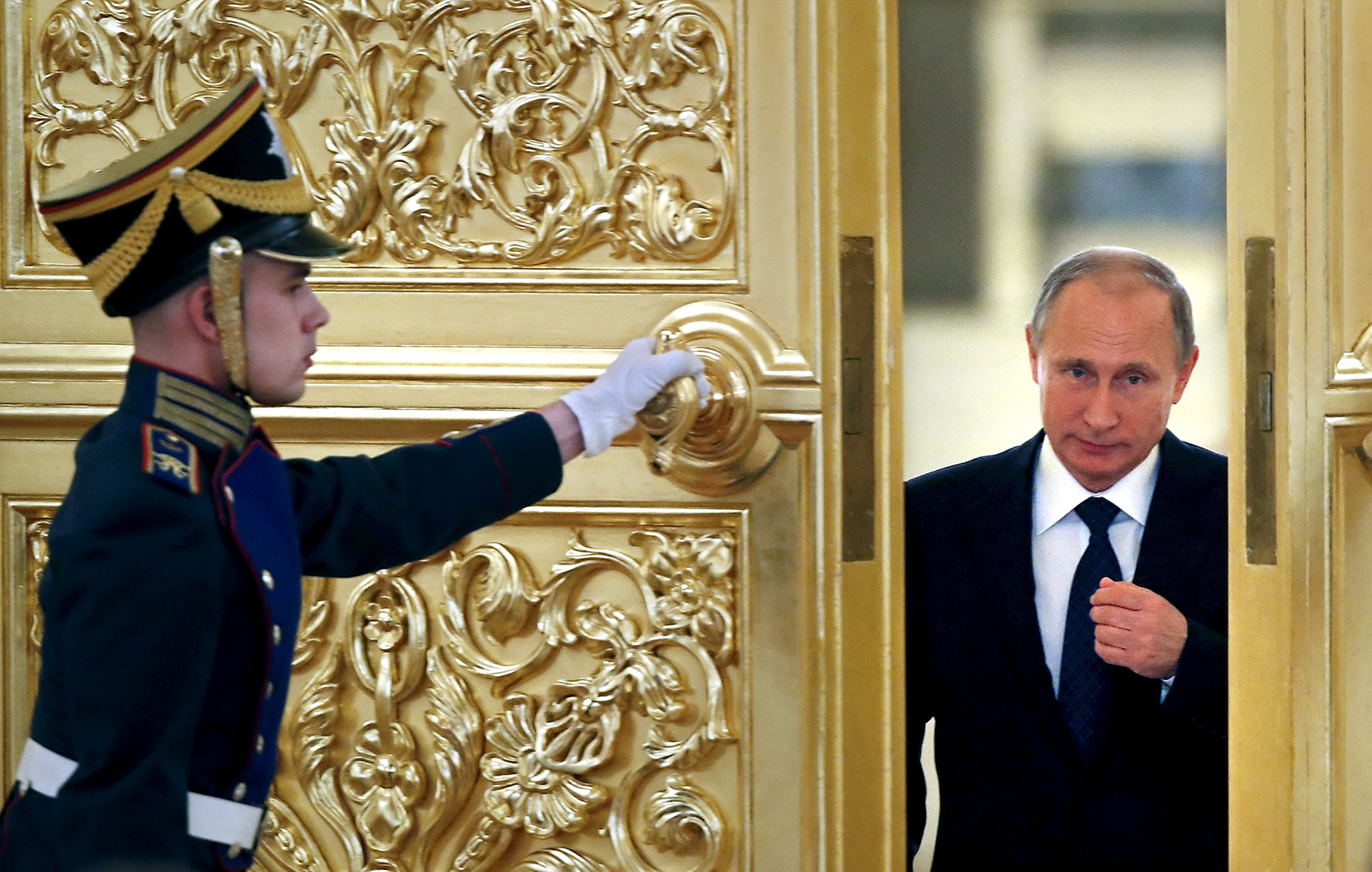






4 comments:
This is isn't the first time that placing Ceravolo's late poetry against the images of the ongoing disaster in Syria draws us close to the heart of it all.
Watching the game play out now, one almost feels a nostalgia for the Cold War.
The narrative is one-sided, criticizing Russia's exploitation of chaos in Syria, while ignoring the US genesis of that chaos, but the photos are compelling. Meanwhile, the Syrians remain victims of a four-way battle between Assad, ISIS, Russia, and the US. In this respect, they are similar to the Vietnamese of four decades ago.
Thank you, Duncan and Jay.
The situation in Aleppo was terrible before the Russians started in with the hell bombing last fall. The Russian bombing has quite plainly made things suddenly and dramatically worse. Forty thousand people who had endured war for years and were as hardened to it as it's possible to be -- suddenly exiting in a day.
The editorial given here (it's of course strictly an opinion piece, the current ridiculous journalistic/academic misuse of the descriptive term "narrative" notwithstanding) seems to reflect a certain sort of anxiety felt by a certain sort of European intellectual in a time of stress and crisis. The concentration on (exaggeration of) Russian complicity in the current world crisis is perhaps over-stated in the piece -- yes, the Americans are always in on the ground first, when it comes to destabilization projects.
On the other hand, the sense of a civilization poised anxiously at the brink of its own demise does provide a feeling of urgency.
Of course we don't really do civilization here, so that conversation, that dread, that nostalgia, will always pass us by.
My first thought was to put Joe's prescient poem, written very near to the end of his life, and the photo of the bloody and shocked cat caught in the ruins of Aleppo, up top.
Anything that happens in the reader/viewer as a result of looking at the photos and/or poems here or on other posts on this blog would constitute the entire effect of the post as meant.
Any editorial direction suggested by any opinion piece or comment by me posted to accompany photos and/or poems would thus be strictly extraneous.
Still, being an old cripple, I am aware of the need for handrails in certain public places.
While on method, normally it's not the pundits I bother to post. I try to get a sense of what's happening in the world from witnesses and observers who are close at hand. The young photographer Baraa Al-Halabi, who has continued to live in and produce images of striking and painful specificity and honesty from Aleppo, has for me been the best source on what's gone on there over the past year and a half or so. In many ways his photos are the poetry of the war.
But I recognize that for many people pictures and poems will always seem a distraction from the punditry. For me it's exactly the opposite. The pictures and poems tell me everything I need, or rather all I can stand, to know.
TC--Thanks for featuring Ceravolo regularly. A unique voice
in so many surprising, unexplored corners of the language.
Deserves to be recognized on a wider level...
Post a Comment